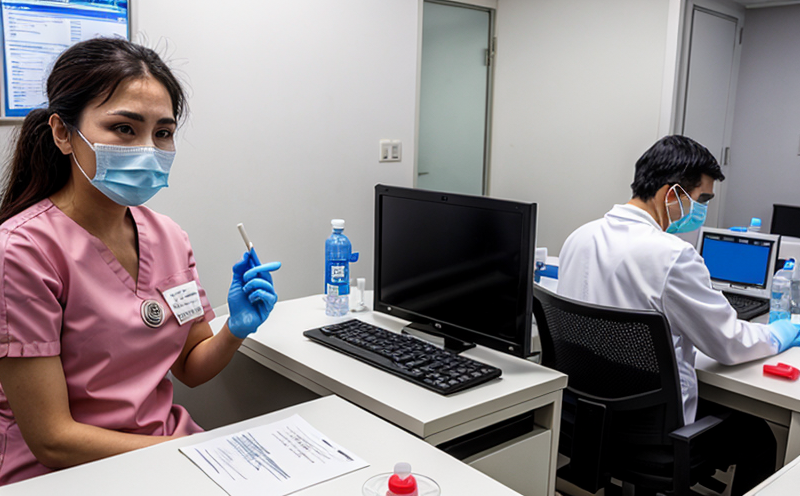Infectious Pancreatic Necrosis Virus (IPNV) Testing in Fish
Infectious Pancreatic Necrosis Virus (IPNV), a member of the family Orthoreoviridae, is a significant pathogen affecting fish species within aquaculture and wild populations. This virus primarily targets juvenile salmonids, leading to severe pancreatic necrosis and resulting in substantial economic losses for the global aquaculture industry. Accurate and reliable testing plays an indispensable role in preventing IPNV outbreaks by ensuring early detection and prompt intervention.
The primary method of diagnosing IPNV involves the use of reverse transcription polymerase chain reaction (RT-PCR) techniques, which are highly sensitive and specific for virus identification. This approach detects viral RNA within infected tissues or fluids, allowing for precise diagnosis even in the early stages of infection. Additionally, serological tests using enzyme-linked immunosorbent assays (ELISAs) can be employed to detect antibodies against IPNV, providing a broader picture of past exposure.
Preparation of specimens for testing requires careful handling to maintain viral integrity and ensure accurate results. Fresh tissue samples should ideally be collected from the pancreas or other relevant organs and preserved in RNA stabilization reagents. For blood-based serological assays, whole blood or serum can be used after proper anticoagulation.
Instrumentation essential for IPNV testing includes specialized PCR machines capable of detecting viral RNA, as well as ELISA readers to quantify antibody levels. Quality control measures are critical; laboratories must adhere to strict protocols and validate their methods against recognized standards such as ISO 15189 or EN ISO/IEC 17025.
The diagnostic process involves multiple steps: sample collection, transport, processing, amplification (if applicable), and final analysis. Each step must be performed meticulously to avoid contamination and ensure accurate results. The use of certified reagents and calibrated equipment enhances the reliability of test outcomes.
Accurate reporting is paramount in IPNV testing. Results should clearly indicate whether viral RNA or antibodies are present, along with their concentrations or titers. This information guides veterinarians and aquaculture managers in making informed decisions regarding treatment and preventive measures.
Why It Matters
The importance of IPNV testing cannot be overstated given the economic implications for the aquaculture industry. Regular testing helps prevent outbreaks, which can decimate fish populations and lead to massive financial losses. By identifying infected individuals early, farmers and veterinarians can implement containment strategies, reduce spread, and minimize harm.
Testing also supports regulatory compliance and biosecurity efforts. Authorities worldwide enforce stringent measures against the introduction of infectious agents into controlled environments like hatcheries and farms. Accurate IPNV testing ensures facilities meet these requirements, thereby protecting both commercial operations and natural ecosystems from potential introductions.
In addition to economic benefits, early detection through IPNV testing contributes significantly to animal welfare by facilitating timely interventions that could save infected fish and prevent further suffering.
Why Choose This Test
- High specificity and sensitivity in detecting viral RNA or antibodies.
- Early diagnosis capability, enabling rapid containment of potential outbreaks.
- Compliance with international standards for accuracy and reliability.
- Supports biosecurity measures and regulatory requirements.
- Facilitates informed decision-making by providing clear diagnostic data.
The use of IPNV testing ensures that aquaculture operations remain sustainable, profitable, and compliant with global health standards. Early detection allows for targeted treatments and preventive measures, reducing the impact on affected populations while maintaining overall industry resilience.
Use Cases and Application Examples
| Use Case | Description |
|---|---|
| Hatchery Monitoring | Detecting IPNV early in hatcheries prevents the spread of infection to newly hatched fry, ensuring healthy populations. |
| Farm Surveillance | Regular testing helps monitor for potential outbreaks and respond promptly with isolation protocols if necessary. |
| Biosecurity Measures | Testing supports compliance with biosecurity protocols by identifying and quarantining infected fish, thus preventing the spread of IPNV within and between farms. |
| Research Studies | IPNV testing is crucial for understanding viral behavior and developing effective vaccines or treatments. |
The versatility of IPNV testing extends beyond immediate containment; it also aids in long-term research endeavors aimed at improving aquaculture practices. By identifying patterns of infection and recovery, researchers can develop more robust prevention strategies and enhance overall fish health.
- Facilitates early intervention to prevent the spread of IPNV within and between farms.
- Supports regulatory compliance by ensuring facilities meet biosecurity standards.
- Aids in research on viral behavior and development of vaccines or treatments.





